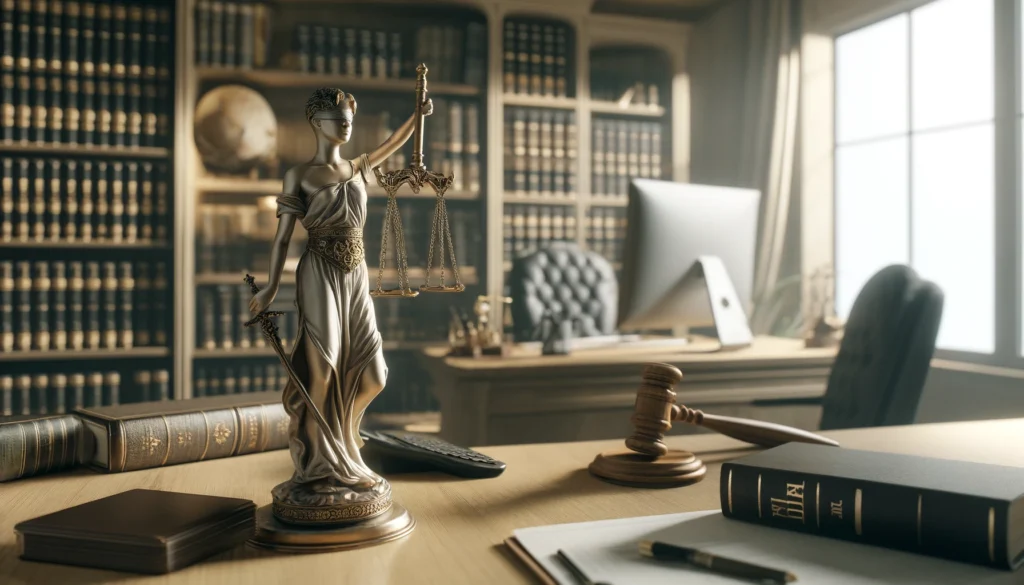
The New Playground for Paralegals: AI and Trademark Registration
In an era of rapid technological advancements, the integration of Artificial Intelligence (AI) into legal workflows has become a revolutionary development. Among these innovations, Large Language Models (LLMs) like ChatGPT are transforming the landscape for paralegals.
ChatGPT, developed by OpenAI, displays advanced capabilities in understanding and generating human-like text. This transformative tool is redefining how paralegals handle trademark registration filings by streamlining tasks and enhancing productivity. As a result, it’s essential to explore how ChatGPT can become a game-changer in daily paralegal operations, particularly in trademark registration.
Laying the Groundwork: Getting Started with ChatGPT
Embarking on the AI journey begins with setting up and accessing ChatGPT. The setup process is user-friendly, typically involving registration on the OpenAI platform and selecting a suitable subscription plan based on organizational needs.
Once the basic setup is complete, integrating ChatGPT into daily tasks requires a strategic approach. Primarily, this involves formulating prompts for the AI to follow. Proper implementation can significantly enhance efficiency in drafting documents, conducting searches, and managing data. Understanding the integration process ensures a smooth transition into leveraging AI effectively.
Crafting the Perfect Prompt: The Art of Instructing AI
Effective use of ChatGPT hinges on crafting precise prompts. The accuracy of AI outputs is directly proportional to the clarity and specificity of instructions provided. Thus, mastering the art of prompt writing is crucial.
Here are some techniques for creating impactful prompts:
- Use Clear and Concise Language: Avoid ambiguous terms, and be explicit about the task.
- Context is Key: Provide sufficient background information to assist the AI in generating relevant responses.
- Break Down Tasks: For complex tasks, decompose them into smaller, manageable parts.
- Specify Formats: Indicate the desired format for the response (e.g., bullet points, paragraphs).
Consider an example of a general versus a specific prompt:
- General Prompt: “Help me with a trademark search.”
- Specific Prompt: “Conduct a trademark search for ‘TechInnovate’ and summarize any potential conflicts in bullet points.”
An efficiently designed prompt enhances the relevance and accuracy of the output, leading to better productivity and fewer revisions.
The Essentials: Trademark Registration Tasks Simplified
ChatGPT’s adaptability shines in simplifying trademark registration tasks, streamlining processes that traditionally bog down paralegals.
**Document Drafting:** Pre-built prompts can aid in generating standard trademark application forms, assignments, and other essential documents swiftly. Here’s a sample prompt:
Prompt: “Generate a standard trademark assignment agreement for transferring the mark ‘TechInnovate’ from Company A to Company B.”
**Trademark Searches and Clearance:** Conducting initial trademark searches becomes more efficient with AI. Tailored prompts help fetch relevant data and summarize potential conflicts. For instance:
Prompt: “Perform an initial search for ‘EcoSustain Products,’ list conflicting trademarks, and assess their categories.”
**Database Management:** Managing and updating client databases can be tedious. ChatGPT simplifies this by automating data entries and updates, ensuring accuracy and saving time.
Leveraging these capabilities not only saves significant time but also ensures precision, reducing the scope for errors.
Advanced Nuances: Going Beyond the Basics
Beyond simplifying routine tasks, ChatGPT’s advanced capabilities prove invaluable for more intricate assignments.
**Legal Research and Precedent Searches:** Utilizing ChatGPT for research can expedite gathering case law, statutory references, and relevant documents. For example:
Prompt: “Summarize key precedents in the last 10 years pertaining to trademark dilution cases.”
**Detailed Reports and Summaries:** Automate the creation of comprehensive reports and summaries, offering insights and consolidating research data coherently.
Prompt: “Create a detailed report on current trends in trademark infringement cases, including relevant statistics and case summaries.”
**Client Communications:** ChatGPT can draft follow-up emails and client communications, tailoring messages to specific contexts and ensuring prompt follow-ups.
Prompt: “Draft a follow-up email to a client regarding the initial search results for their proposed trademark ‘GreenEnergy Solutions.'”
These advanced features reiterate how ChatGPT complements paralegals, transforming complexity into simplicity.
Battling the Bugs: Troubleshooting and Best Practices
While ChatGPT offers numerous benefits, it’s not without its quirks. Common pitfalls include inaccuracies and context misinterpretations. To combat this:
- Regularly review AI outputs for accuracy.
- Refine prompts to minimize ambiguities.
- Ensure data security through encryption and limited access protocols.
Implementing these strategies ensures a more reliable and secure AI-assisted workflow.
Future-Proofing Your Skills: Continuous Learning and Adaptation
In the ever-evolving tech landscape, continuous learning is crucial. Keeping abreast of AI advancements ensures paralegals remain competitive.
Leveraging resources such as online courses, webinars, and industry publications can provide ongoing training and skill enhancement, ensuring proficiency in utilizing AI tools like ChatGPT.
Wrapping Up: The Road Ahead for AI in Legal Workflows
To conclude, integrating ChatGPT into trademark registration tasks offers tremendous potential for efficiency and accuracy. Paralegals are encouraged to embrace this technology, experiment with its capabilities, and continuously innovate. The synergy between AI and legal professionals heralds a dynamic transformation in legal workflows, setting a promising trajectory for the future.


